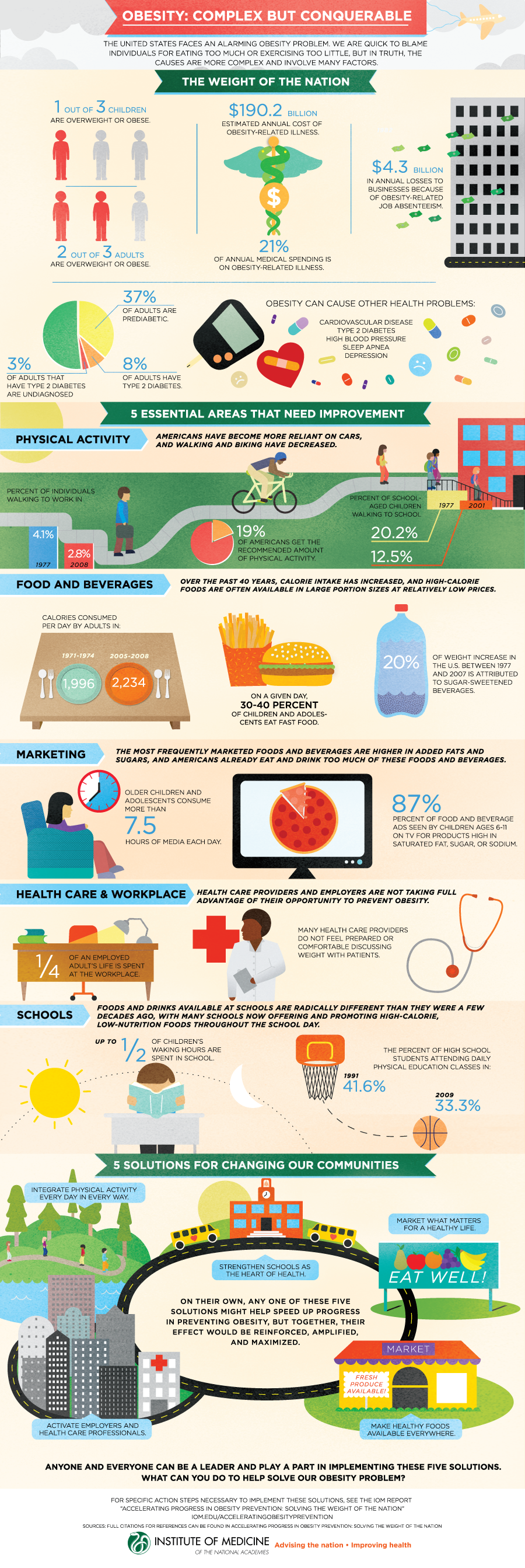Americans know they are fat. A staggering two-thirds of adults and one-third of children in the United States are overweight or obese, hampering the overall productivity and health of the nation. Obesity-related illness treatments cost an estimated $190.2 billion annually, for example, which is 21 percent of annual medical spending in the United States. Researchers project this will only get worse, estimating costs will rise to $549.5 billion by 2030, according to a report in the American Journal of Preventive Medicine. Businesses also suffer, facing an approximate $4.3 billion in losses as a result of obesity-related absenteeism.
A new report released Monday, “Accelerating Progress in Obesity Prevention: Solving the Weight of the Nation,” by the Institute of Medicine (IOM), the health group of the National Academy of Sciences, outlines five obesity prevention actions that can accelerate societal-level prevention, including:
- Integrating physical activity into people’s daily lives
- Making healthy food and beverage options available everywhere
- Transforming marketing and messages about nutrition and activity
- Making schools a gateway to healthy weights
- Galvanizing employers and health care professionals to support healthy lifestyles
These strategies are the result of an IOM committee assessment of 800 previously published obesity prevention recommendations and associated strategies, mapping how the relationships between these efforts could improve their individual and overall impacts.
“As the trends show, people have a very tough time achieving healthy weights when inactive lifestyles are the norm and inexpensive, high-calorie foods and drinks are readily available 24 hours a day,” said committee chair Dan Glickman, executive director of congressional programs, Aspen Institute, Washington, D.C., and former secretary, U.S. Department of Agriculture, in a press release. “Individuals and groups can’t solve this complex problem alone, and that’s why we recommend changes that can work together at the societal level and reinforce one another’s impact to speed our progress.”





